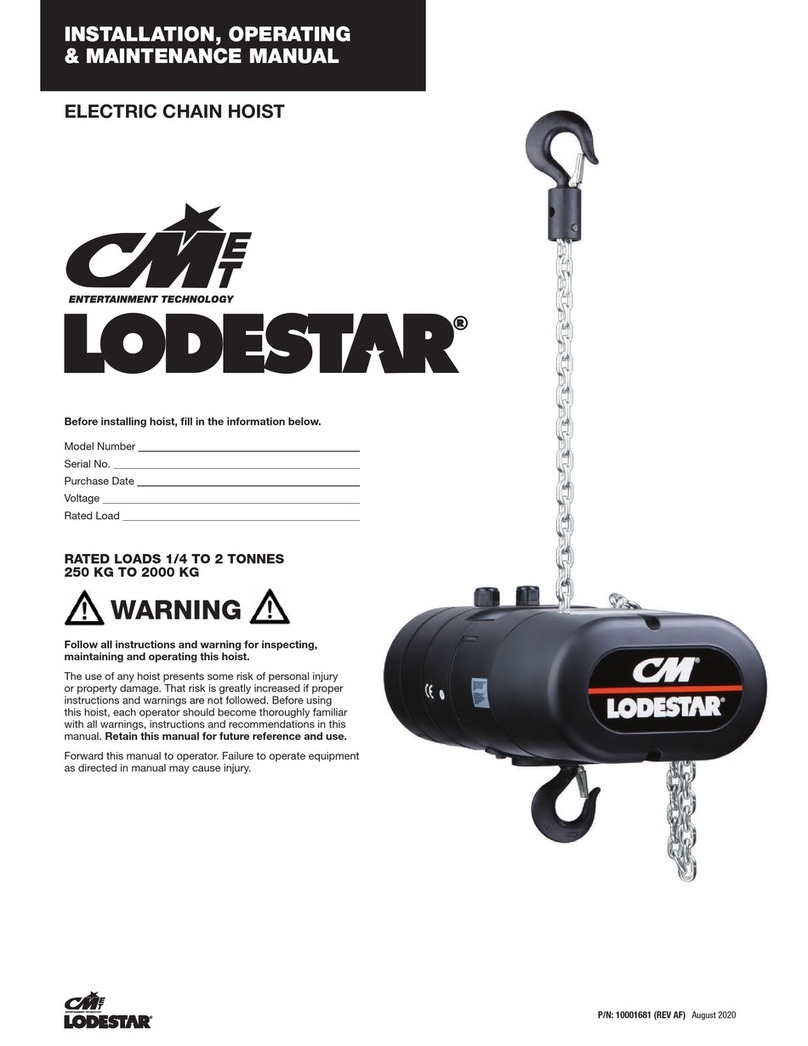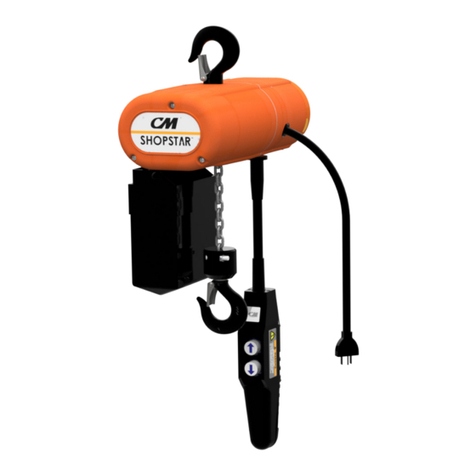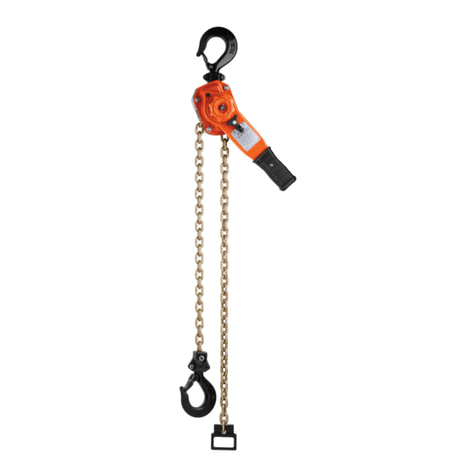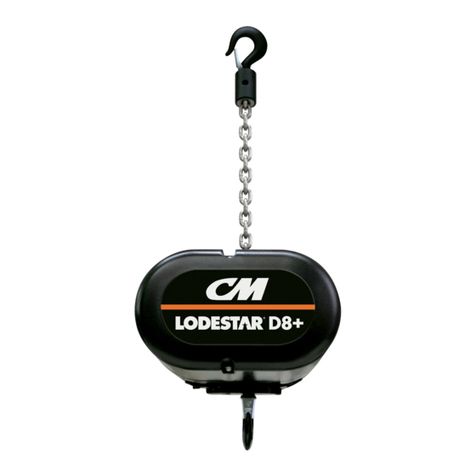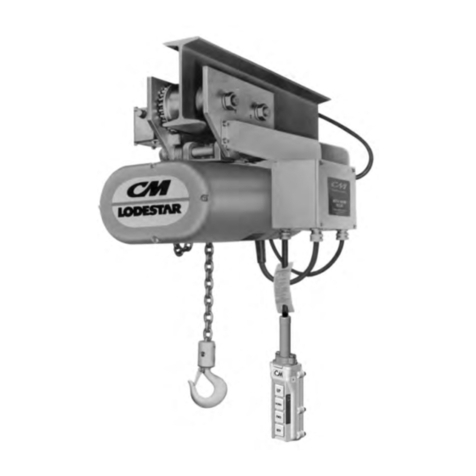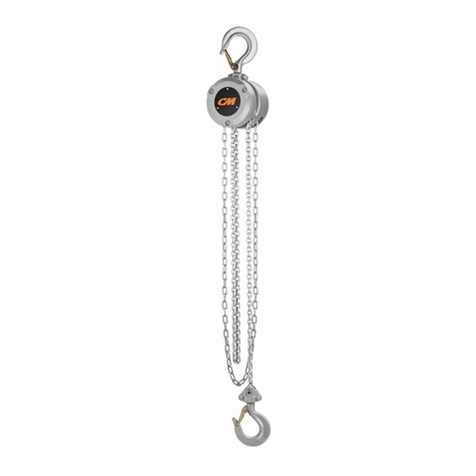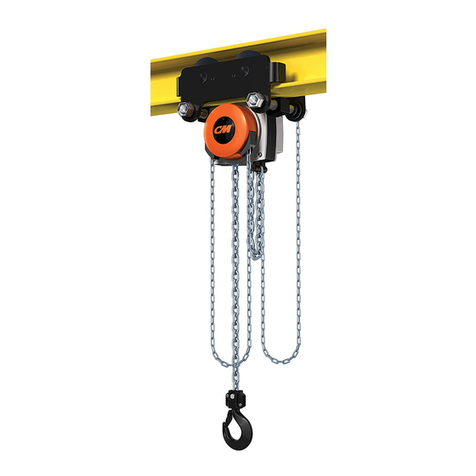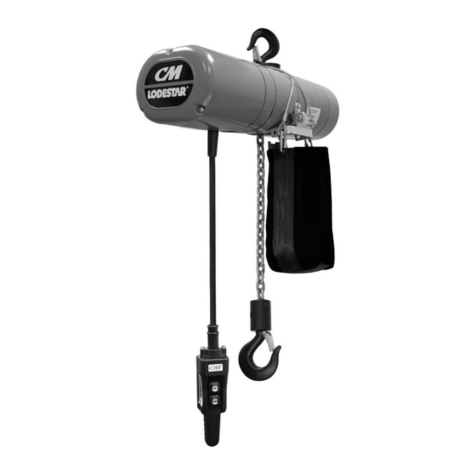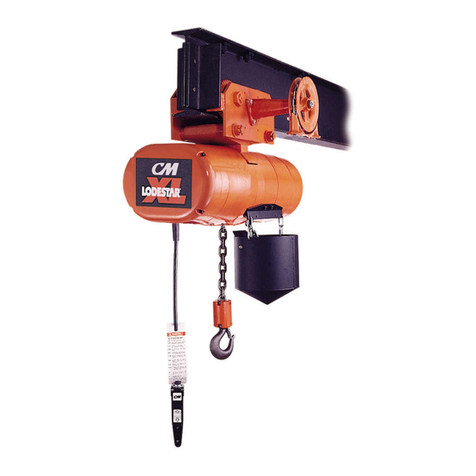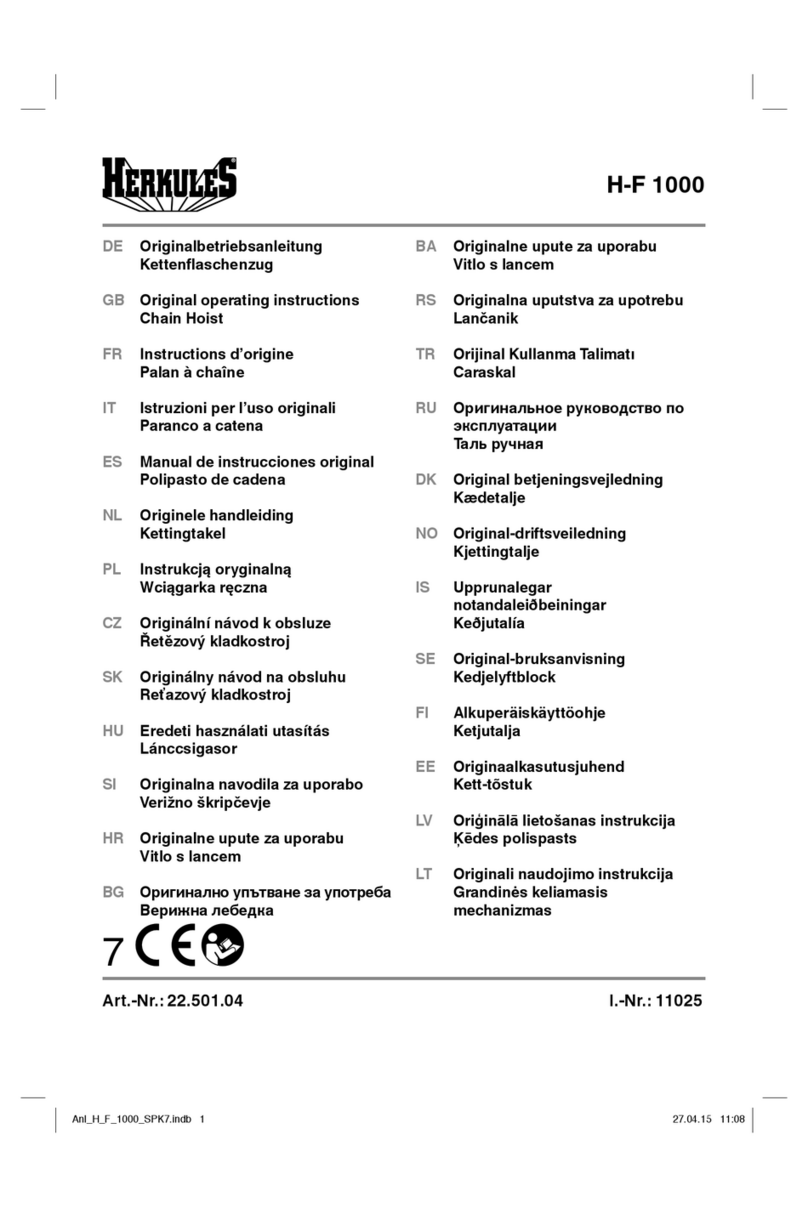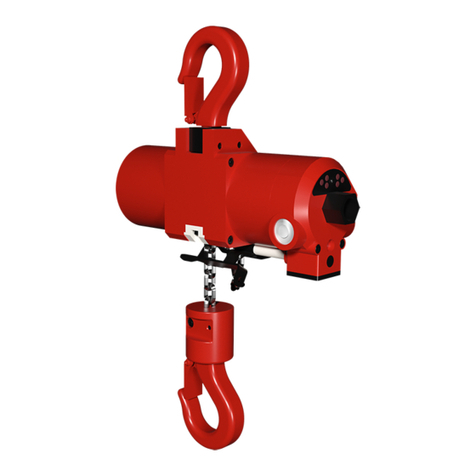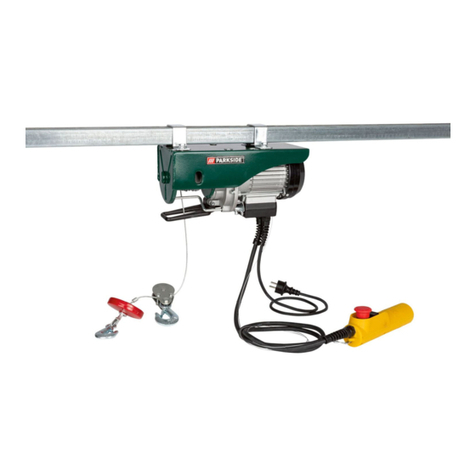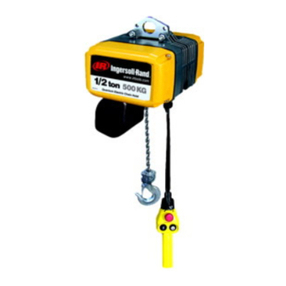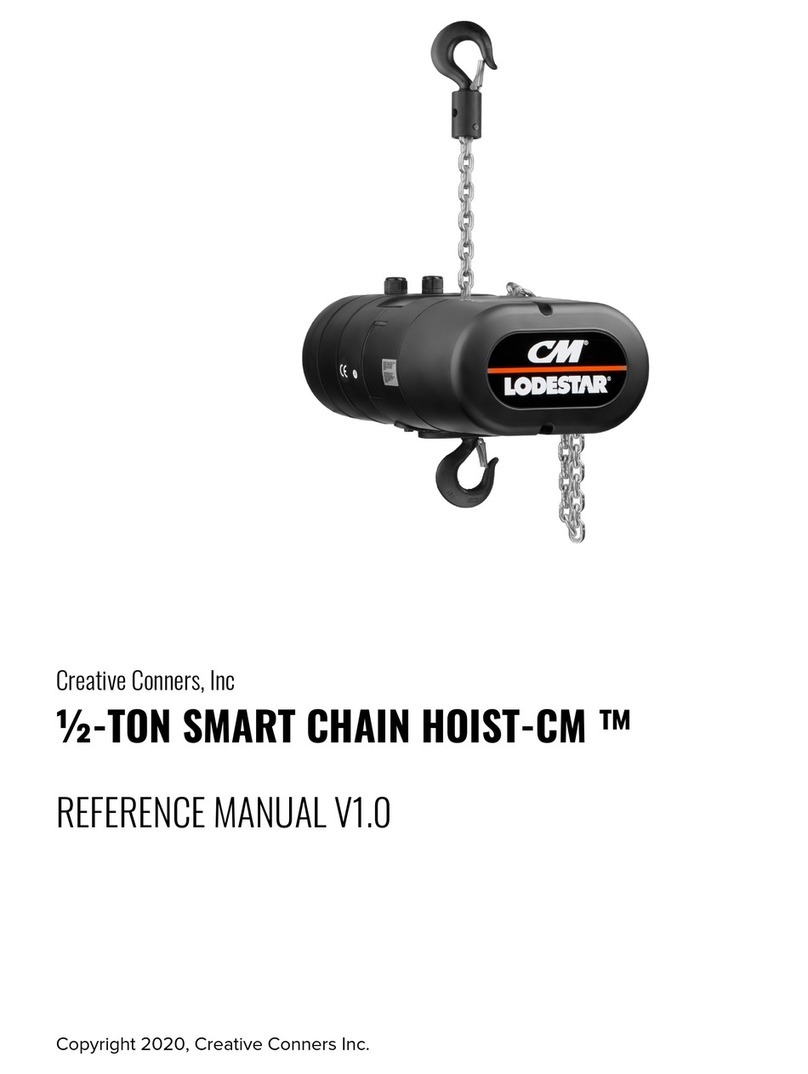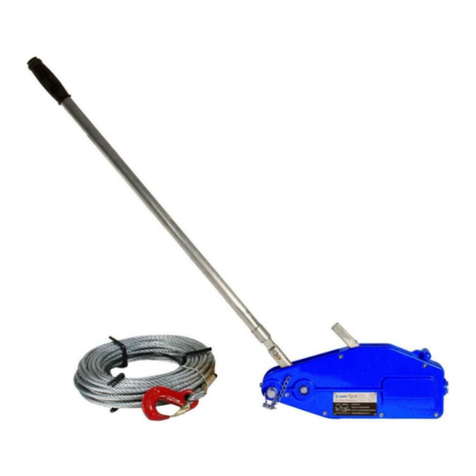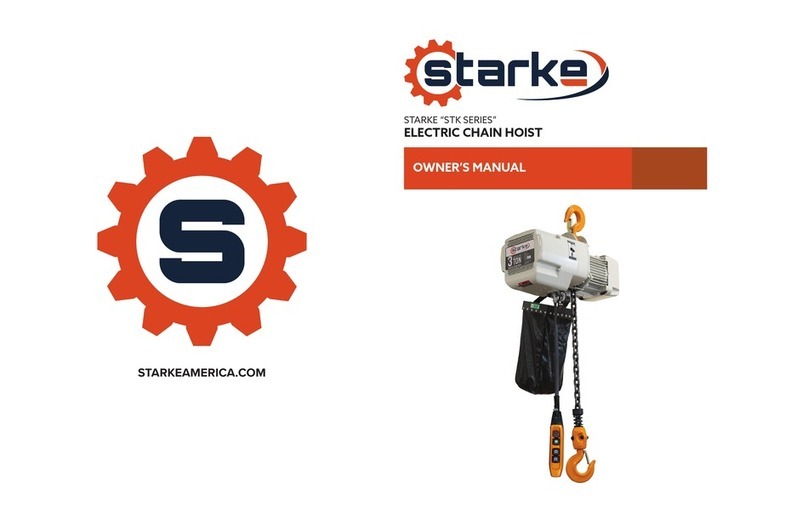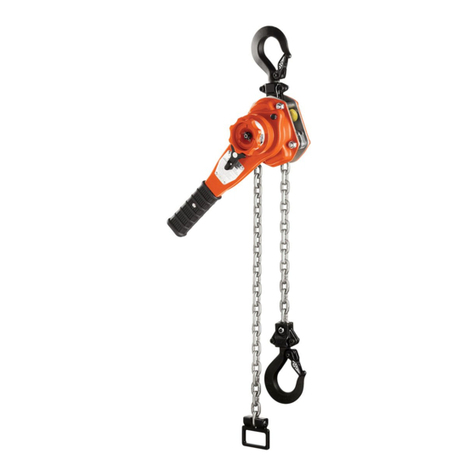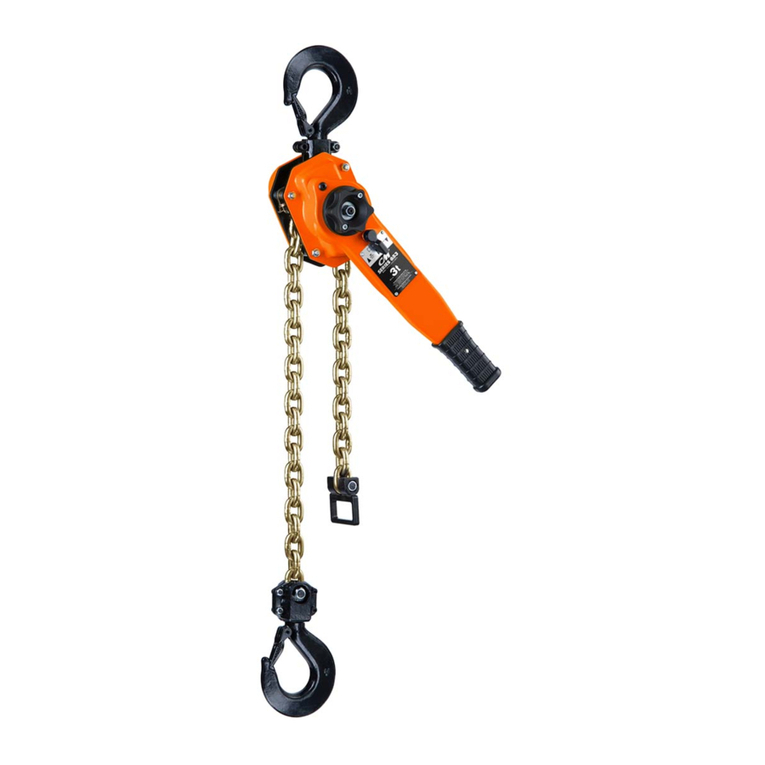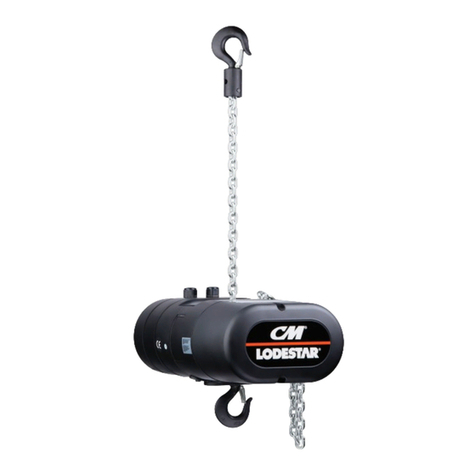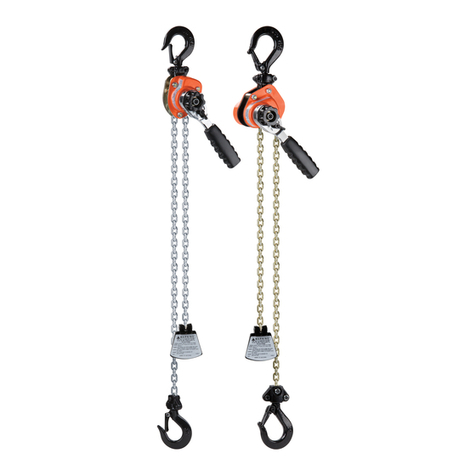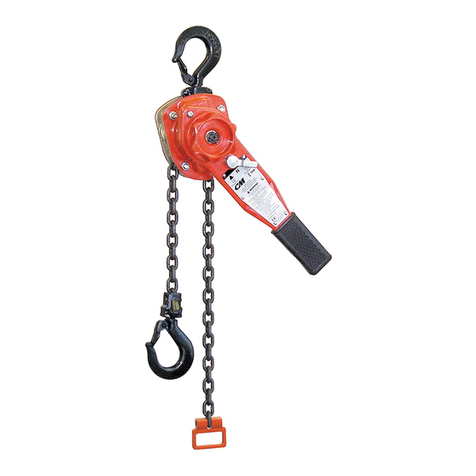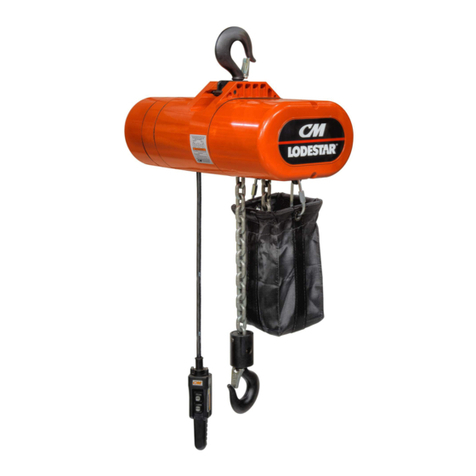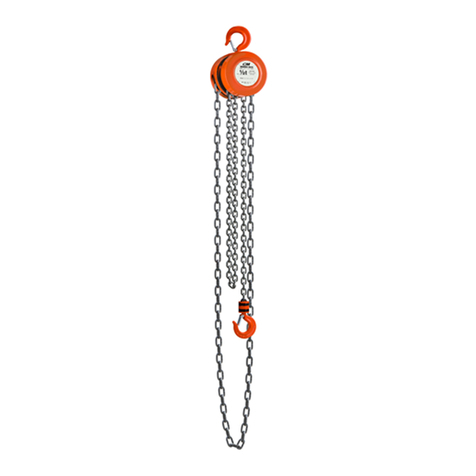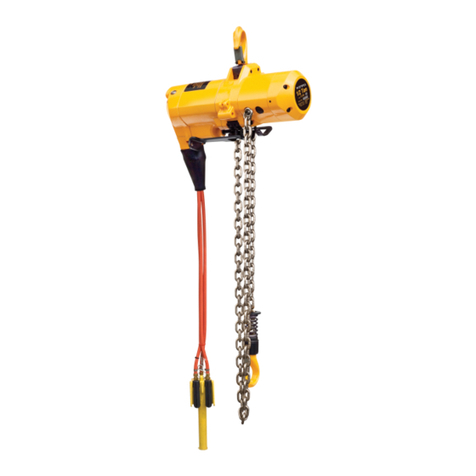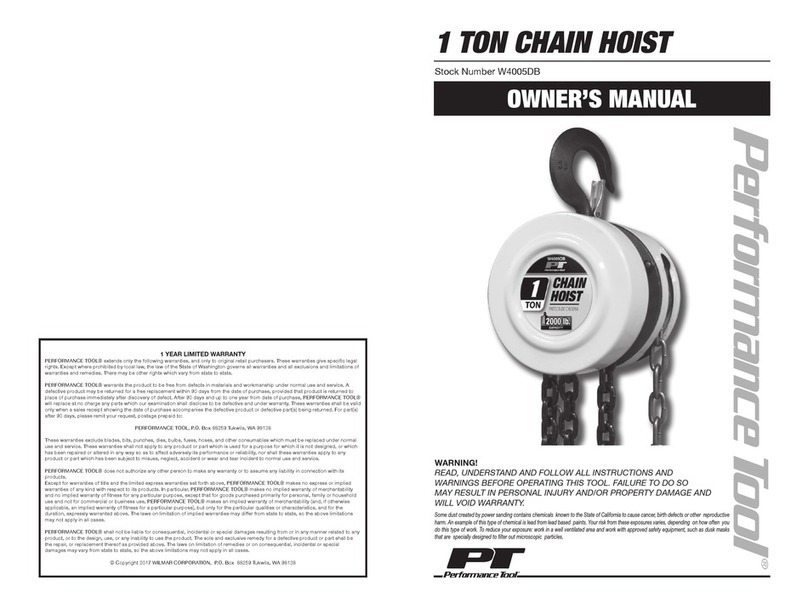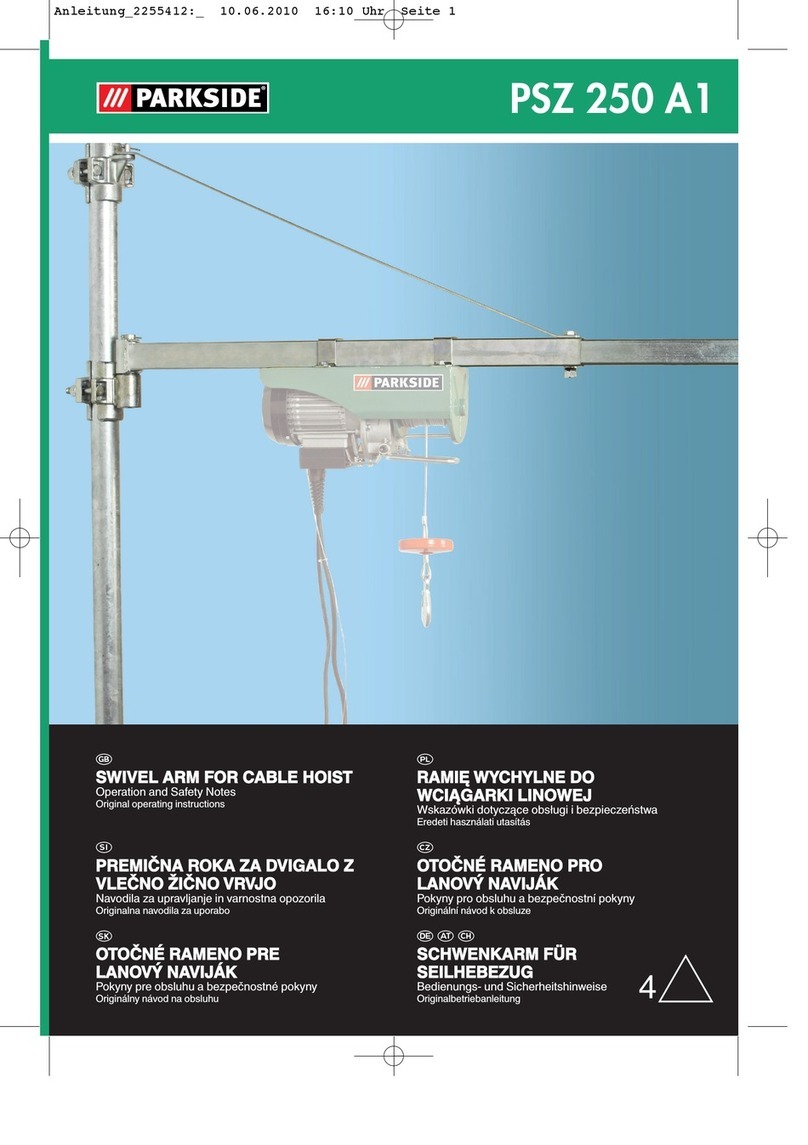106
Using any grease or lubricant on the braking surfaces
will cause brake slippage and loss of load control
which may result in injury and/or property damage.
TO AVOID INJURY:
Do not use any grease or lubricant on braking surfaces.
The brake is designed to operate dry.
If hoist is disassembled for service, repair or inspection,
remove and clean existing grease from unit and replace with
approximately 1 oz. of Poliplex 2 (Century Lubricants Co.)
grease or equal lubricant to the exterior surface of the drive
shaft, gears, internal thread of brake hub, surface of lift-
wheel bushings (1/2 ton unit), bushings in the gear side plate
and gear cover, internal and external surfaces of handwheel
bushings and rim of handwheel cover.
IMPORTANT: To assure long life and top performance,
be sure to lubricate the various parts of the hoist using the
lubricants specified above. If desired, these lubricants can
be purchased from CM®(See Figure 8, page 8).
REPLACING LOAD CHAIN
To replace the load chain, remove the lower hook block
(656-17) from the chain. Disconnect the chain from the
loose end connector (656-7) and operate the hoist in the
lowering direction to run the chain out of the hoist.
Feed a length of soft wire up and over the liftwheel.
Attach the wire to the new load chain so that the chain will
be entering the center of the hoist frame. Position the chain
so that the first link to engage the liftwheel is an upstanding
link and the weld on all upstanding links will be away from
the liftwheel. Pull on the wire until the chain engages the lift-
wheel. Rotate the handwheel until the chain comes out
on the loose side of the hoist. Attach the chain to the loose
end connector and attach the lower hook block assembly
to the chain so that the lower hook is directly below the
upper hook.
DISASSEMBLY AND ASSEMBLY
The parts list and exploded view on pages 12 and 13
show the general arrangement and name of the parts
of the CM® Hurricane 360 Hand Hoist. These should be used
when disassembling and reassembling the hoists so that
all parts are properly installed.
1. To inspect or replace the load brake disc, it is necessary
to partially disassemble the hoist. Remove the handwheel
cap (656-36) and the handwheel cover support (656-35).
Lift off the handwheel cover (656-34A) and slide it down
the hand chain (656-31). Lift the hand chain out of the
handwheel (656-27) pockets. Remove cotter pin (656-33),
castle nut (656-30) and washer (656-29) from the drive shaft
(656-10). Remove handwheel overload clutch assembly
by turning handwheel (656-27) counter clockwise. Inspect
handwheel brake hub (626-22) and replace it if the friction
surface is excessively scored (see Section 3, HANDWHEEL
OVERLOAD CLUTCH ASSEMBLY). Slide front brake disc
(656-26), ratchet disc assembly (656-21) and rear brake disc
(656-26) from pressure disk (656-20). Remove retaining ring
(656-41) and remove pressure disc (656-20) by turning
counter clockwise. Inspect both brake discs (656-26)
and replace if excessive wear, scoring, glazing
or contamination is found. If brake discs are worn down
to the following thickness, replacement is required:
Capacity Thickness Min. (in)
1/2 –Ton, 1-Ton & 2-Ton .043
3-Ton, 5-Ton & 10-Ton .063
Inspect ratchet disc assembly (656-21) and pressure disc
(656-20) friction surfaces, replace if excessively scored.
After the brake discs are inspected or replaced, reassemble
the hoist in reverse to the order given above.
2. To inspect or replace the liftwheel, chain guide or stripper,
it is necessary to disassemble the hoist. Remove the load
chain (See REPLACIN LOAD CHAIN, above) and then
remove the handwheel cap (656-36) and the handwheel cover
support (656-35). Lift off the handwheel cover (656-34A) and
slide it down the hand chain (656-31). Lift the hand chain out
of the hand wheel (656-27) pockets. Remove cotter pin (656-
33), castle nut (656-30) and washer (656-29) from the drive
shaft (656-10). Remove handwheel overload clutch assembly
by turning handwheel (656-27) counter clockwise. Slide front
brake disc (656-26), ratchet disc assembly (656-21) and rear
brake disc (656-26) from pressure disk (656-20). Remove
retaining ring (656-41) and then remove pressure disc (656-20)
by turning counter clockwise. Remove the handwheel side
plate (656-9), by sliding it over drive shaft (656-10). Remove
the stripper (656-6) and chain guide (656-5). Examine the
stripper, chain guide, liftwheel (656-8) and loose end connector
(656-7) for wear and damage.
If the stripper, chain guide and/or loose end connector are
worn or damaged they should be replaced. If the liftwheel
is not worn or damaged, reassemble the hoist in reverse to
the order given above. If the liftwheel is to be replaced,
continue to disassemble the hoist.
NOTE: Two points of caution to be observed in disas-
sembly and assembly of the gears:
a Loose rollers are used in various locations in some
units. Care must be taken so as to not lose or misplace
these.
b For proper operation, the correct number of rollers
must be installed at the rotating points. Applying
grease to the rollers will help hold them in position during
assembly.
Remove the gear cover (656-1), end covers (656-4) and
gears (656-12A and 656-12B). Remove drive shaft (656-
